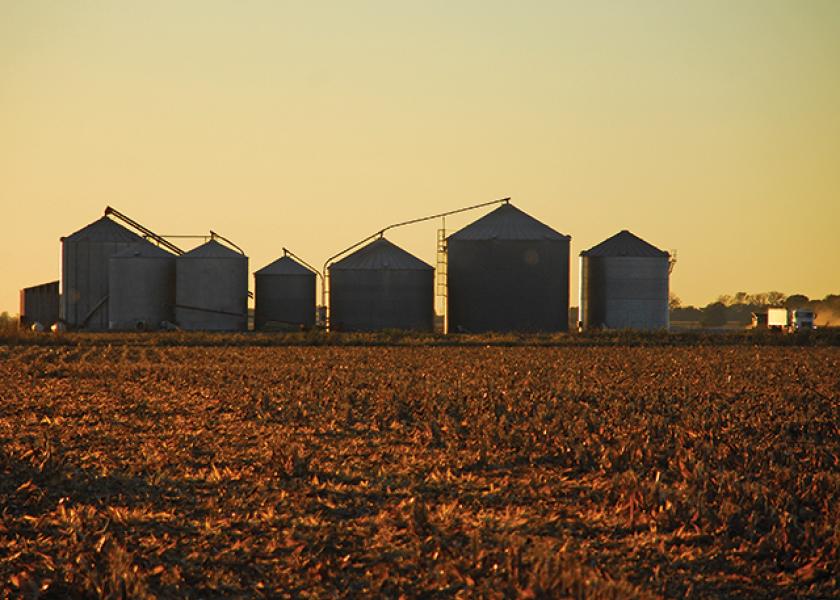In the 'Silo': Hulu Film Sheds Light on the Dangers of Grain Bin Entrapment

It’s not very often you see movies being made about rural America, least of all a film that showcases the dangers of farming.
The Man in the Moon (1991) and The Dressmaker (2015) are two films that ring a bell, but no others come to mind. However, Hollywood tides look to be turning as agriculture and its safety risks are gaining traction in the film industry.
Not Just Fate
Sam Goldberg—a New York City boy turned film producer—was far removed from anything dealing with agriculture. That is until he found himself in the midst of a tragedy.
News of a grain bin entrapment on a farm in Mt. Carroll, Ill. caught up with Goldberg in 2010, shifting his film lens from the city to rural America.
“The story hooked me so hard, I called my business partner and told him I’m not working on anything else until Silo gets made,” he says.
Goldberg shared when he first set out to make his grain entrapment film, Silo, he was focused on telling a compelling story—a movie he would want to go see. However, that spotlight quickly morphed into a bigger lesson.
“The more we got into making the story of Silo, the more people in ag were telling us how important this might be to the community for farm safety.”
The Plot
According to Goldberg, Silo takes place over the course of 24-hours on a small grain farm in the Corn Belt.
“It follows the story of Cody Rose, an 18-year-old who was a farmhand, working before harvest season,” he says. “Due to a bunch of bad domino effects, Cody gets trapped in a grain bin and the film is a rescue mission as to whether or not they’ll get him out.”
While the story involves a grain bin, Goldberg says he chose the title “Silo” not to confuse his audience, but to get them thinking.
“’Silo’ has double meaning—it’s a movie that’s really about people who are siloed from each other, even though they’re living in close proximity,” he says. “These people should be close and have a bond, but they’re not communicating well, which is why this accident happens.”
Communicating internal issues and issues with one another is pivotal in a farm setting. Goldberg says that’s exactly the message he’s trying to convey to the audience—communication is key.
An Outsider’s Insider
As someone who moved from the city to the countryside, Goldberg says he used to be a filmmaker making a movie about agriculture, “but now I’m a farm guy who happened to make a film.”
He admits, prior to the film, he didn’t know the difference between a grain bin or silo, nor the reason for production ag tractors. He says his few 1000 square foot apartment in a 12-story building in the middle of New York City provided him “nothing” when it came to knowledge of rural America.
“So many people are generations removed from working on the farm that they don’t really understand where their food and energy comes from,” says Goldberg. “It’s been cool to become an outsider’s insider in the ag industry.”
Watch Your Next Move
In 2019, Purdue University’s Agricultural Safety and Health Program reported 38 grain entrapment cases with 23 of those cases leading to fatalities.
It’s stories like these that continue to haunt Goldberg. From his work in Silo, he knows producers need to enter bins now and again. With his knowledge in hand, he offers a few safety considerations:
1. Harness up
Harnesses are available between $100 and $200, according to Goldberg, with used options at a much lower cost. He says it’s not uncommon for fire departments to loan or gift farmers a harness when an inquiry is made.
2. Phone a friend
Goldberg suggests farmers tell at least two people that they’re going into the bin.
“Call your wife, a farmhand or even a volunteer firefighter that you know,” says Goldberg. “Send out a mass text letting people know you’re going into your bin and if they don’t hear back from you in 20 minutes, call.”
3. Buy a lock-out tag
Auger lock-out mechanisms can ensure the auger stays off in the event of an accident. A few auger accidents have occurred, according to the film producer. He says this lock-out “could save a life.”
4. Grain Handling Safety Coalition
The grain entrapment in Mt. Carroll, Ill. that shifted Goldberg’s career also led to the beginning of the Grain Handling Safety Coalition, which offers grain handling information, training and certifications.
What’s in Store
Goldberg says the ultimate goal of any film is to get people in the room talking about issues. Upon Silo’s release, he says the ag community cracked open another idea for the film maker: mental health.
“Suicide is like an epidemic in the ag community,” says Goldberg. “We wanted to come up with a way to tell a story that tackled the subject of suicide in farming, so we’ve scripted a 6-part limited T.V. series, Perfect Sundays, about a dairy operation that’s struggling to stay afloat.”
While the show is ready to be filmed, Goldberg says the setting is season-dependent, meaning the production team needs good weather to film. He thinks the Pennsylvania film will be produced over the course of the next few years, if the stars align.
In the meantime, Goldberg asks anyone with questions or comments to reach him by email: sam@silothefilm.com.
More on mental health and farm safety:
By Her Own Hand: A Farm Girl’s Miraculous Journey from Death to Hope
Here’s Why You Need to Find Time for A Nap During the Busy Season
Kids on the Farm: Don’t Take Your Eyes Off Safety







